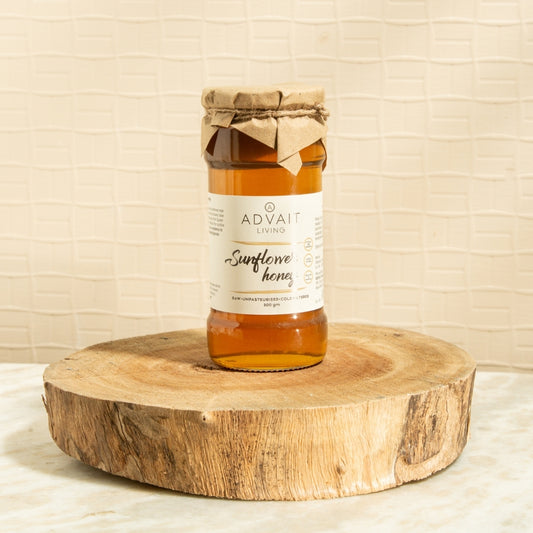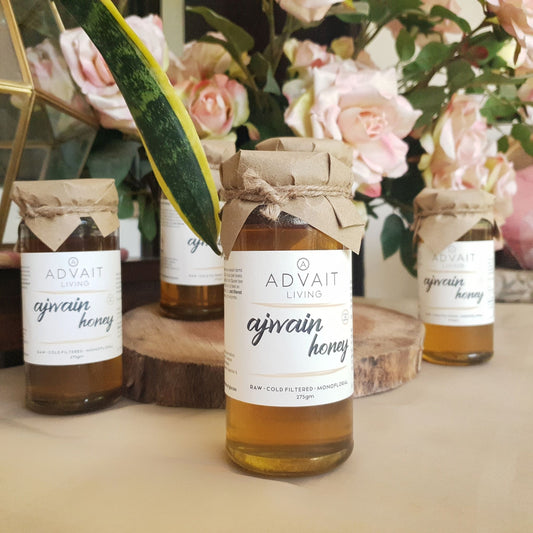Interest in natural sweeteners has grown rapidly in recent years, and jaggery often appears at the top of “healthier sugar” lists. But how healthy is it in reality? Understanding the difference between regular white refined sugar and jaggery starts with looking at how each one is made.
A Brief History of Sugar Processing
Before industrialisation, India processed sugarcane into gur or jaggery — a sticky, semi-solid, naturally brown sweetener. Another traditional variant was desi shakkar, an unrefined granular sugar.
Around 350 CE, during the Gupta period, India discovered sugar crystallisation. This breakthrough shaped global trade for over a millennium. For centuries, India exported unrefined sugar and sugarcane cultivation techniques worldwide. The profitability of sugar was so enormous that European powers eventually established colonies across tropical regions to grow and refine sugar on a massive scale.
Refined white sugar is an evolution of industrialisation. Traditionally, sugarcane juice was processed into gur or also known as “Jaggery”, a gooey sticky semi-solid brown sweetener. India also created desi shakkar, another form of unrefined cane sugar, early on.
Technological advancements, the rise of the bakery industry and the establishment of the beverage industry called for improved white sugar, a sugar when dissolved in water that produced a clear liquid. The unrefined sugar and jaggery both had molasses and traces of other impurities. They produced cloudy water that was undesirable to the industry, and thus, refined white sugar was born.
Traditional khandsari and gur-making units gradually disappeared and were replaced with large-scale mills focused solely on refined white sugar. India alone now produces more than 270 lakh tonnes of sugar annually.
How Refined Sugar Is Made
To produce industry-standard white sugar, complex cleaning processes are required.
- The sugarcane is cut, washed in hot water and pressed.
- The juice is then mixed with lime.
- The canes may also be burned, mixed with soda ash and exposed to a myriad of chemicals to clarify the sugar.
- It undergoes several processes that may include bleaching, carbonation, filtration, ion exchange, centrifuges, drying and crystallisation.
Certain chemicals assist in the clarification process. Their role is functional, but understanding them helps explain why refined sugar is considered nutritionally stripped:
- Sulfur dioxide is usually added to milled white sugar before evaporation. This is what makes table sugar white. It bleaches the cane sugar.
- Phosphoric acid is another chemical used in the manufacturing of refined white sugar. It is added to liquid sugar before evaporation in order to remove any impurities.
- Calcium hydroxide (the most harmful) is another chemical added to raw sugar to purify it before evaporation. When ingested, it can lead to vision loss, severe throat pain, severe skin and eye irritation, bloody stool, vomiting, low blood pressure, and organ damage, among others.
- Polyacrylamides, derived from acrylamide, a known neurotoxin, are used for clarifying cane sugar into white table sugar. These are known to damage male reproductive glands and sweat glands.
These chemicals assist processing and are not present in meaningful quantities in the final product. You may not be able to trace the chemicals that are used in its purification process. However, the purification steps also remove minerals, vitamins, and phytochemicals.
Hence, one thing is certainly true about refined white sugar. It is pure (glucose molecule). The Canadian Sugar Institute summarises it clearly: sugar contains no other nutrients on its own.
How Traditional Jaggery Is Made
Jaggery, on the other hand, can be minimally processed and often made without industrial additives. The traditional method is simple:
- Clean and crush fresh sugarcane to extract juice.
- Boil the sugarcane juice on a low flame slowly until it thickens.
- Skim off impurities as they rise during boiling. In villages and organic farms, Natural clarifiers like okra (bhindi), desi ghee, or cow’s milk may be added in small amounts to help separate impurities.
- Remove the thickened sugarcane juice from the fire once it passes the water test (put a tiny amount of thickened juice in water and test if it rolls into a ball easily).
- The concentrate should be cooled in large trays and solidified.
- It is then sliced or moulded and stored for several months.
Jaggery produced as above would usually be dark to light brown in colour (extremely whitish jaggery is an example of chemically-washed jaggery). Because jaggery retains the whole sugarcane juice, it preserves a part of the natural vitamins, minerals, salts and phytochemicals.
Nutritional Comparison: Jaggery vs Refined Sugar
Jaggery (per ~20 g):
- 38 calories
- 9.8 g carbohydrates
- 9.7 g sugar
- Trace amounts of: Iron, Calcium, Magnesium, Phosphorus, Potassium, Selenium, Manganese, B-vitamins (tiny amounts)
Refined Sugar (per 20 g):
- 77 calories
- 20 g carbohydrates
- 20 g sugar
- No vitamins or minerals
Jaggery contains small amounts of micronutrients because it is not stripped of molasses. Its nutrients are not high enough to make jaggery a health food, but they do offer more than refined sugar.
Is Jaggery A Healthier Sweetener?
Yes — when compared directly to refined white sugar.
-
- It is minimally processed. A good organic farmer or a good quality gur-making unit will prepare the jaggery without the use of any chemicals, preservatives or synthetic additives.
- It contains trace nutrients. The whole of sugarcane juice is used to make jaggery. That means all vitamins, minerals and nutritional profile remain intact in jaggery.
- Jaggery is a complex carbohydrate. Due to its complex molecular structure, jaggery is unlikely to become addictive.
- Jaggery offers a slower, steadier release of energy compared to refined sugar.
- Unlike white refined sugar, jaggery production does not involve heavy industrial clarification. It can be cleared of its impurities naturally by simply skimming it off manually.
Health Benefits of Jaggery
Because it retains molasses and trace minerals, jaggery is associated with several traditional and Ayurveda-backed uses:
-
-
- Supports digestion
- Acts as a mild blood purifier
- Helps maintain body temperature
- May soothe throat irritation
- Offers small amounts of iron, helpful for mild anaemia
- Contains antioxidants from sugarcane phytochemicals
-
Ayurveda also uses jaggery for managing conditions like cough, lung congestion, migraines, and asthma.
These benefits, however, apply when consumed in small quantities and as part of a balanced, minimally processed diet.
Glycemic Index and Blood Sugar Impact
Jaggery is often described as a complex carbohydrate because it contains sucrose, glucose, fructose, and small amounts of minerals and plant compounds. This composition slightly slows its absorption compared to refined table sugar.
Its glycemic index (GI) is lower than white sugar, but it still raises blood glucose levels.
Important clarification:
-
-
- Jaggery is still sugar (65–85% sucrose).
- It is not suitable for diabetics, despite its lower GI.
- Excess consumption can still contribute to weight gain, insulin resistance, and metabolic stress.
- For anyone with diabetes, metabolic syndrome, or weight concerns, jaggery should be treated with the same caution as sugar.
-
How Much Jaggery Is Safe?
A practical guideline for most healthy individuals is: 1–2 teaspoons per day, preferably after meals or during winter, is reasonable.
Anything more becomes similar to regular sugar intake.
How to Choose Good Quality Jaggery?
Look for:
-
-
- Dark brown colour (not pale or white)
- Slightly grainy texture
- A mild, earthy aroma
- Labels indicating organic or chemical-free processing
- Suppliers who disclose their heating and clarifying methods
-
Avoid:
-
-
- Very light or overly shiny jaggery
- Blocks that feel unusually hard or plasticky
- Any product with ingredient lists beyond “sugarcane juice”
-
To enjoy its benefits, Jaggery should be consumed in small quantities only.
Conclusion
Jaggery is a better choice than refined white sugar if you’re looking for a less processed sweetener with trace minerals and traditional benefits. But it is still a form of sugar and should be enjoyed in moderation. Choosing high-quality, chemical-free jaggery is key to getting its nutritional and Ayurvedic benefits without excess sugar intake.
Frequently Asked Questions
1. Is jaggery good for weight loss?
Jaggery is still sugar and does not contribute to fat loss. However, it is comparably better than refined white sugar as it is minimally processed without chemicals or being stripped of nutrients present in the cane sugar.
2. Can diabetics consume jaggery?
No. Jaggery raises blood sugar and behaves similarly to sugar metabolically, albeit slightly slowly than refined white sugar.
3. Does jaggery have a lower GI than sugar?
Yes, jaggery does have a lower Glycemic Index than refined sugar, but the difference isn't enough to make jaggery completely harmless.
4. How to identify pure jaggery?
Pure jaggery is darker in colour, smells earthy, and tastes mildly caramel-like without any chemical aftertaste. Whereas chemically processed jaggery looks whitish in colour and tastes like chemicals that were used during its clarification.
References:
- Canadian Sugar Institute
- Green Living Tips; White Sugar vs Raw Sugar; January 20, 2007
- Healthy Eating Politics: White Sugar — The No Nutrition Food
- U.S. Environmental Protection Agency: Sulfur Dioxide
- Natural News; Phosphoric Acid in Sodas Nearly as Damaging to Teeth as Battery Acid; April 5, 2007
- Canadian Centre for Occupational Health and Safety; Health Effects of Phosphoric Acid; February 1999
- “New York Times”; Calcium Hydroxide Poisoning; February 7, 2010
- Macrobiotic Guide: Sugar — Its Effects on the Mind and Body






















